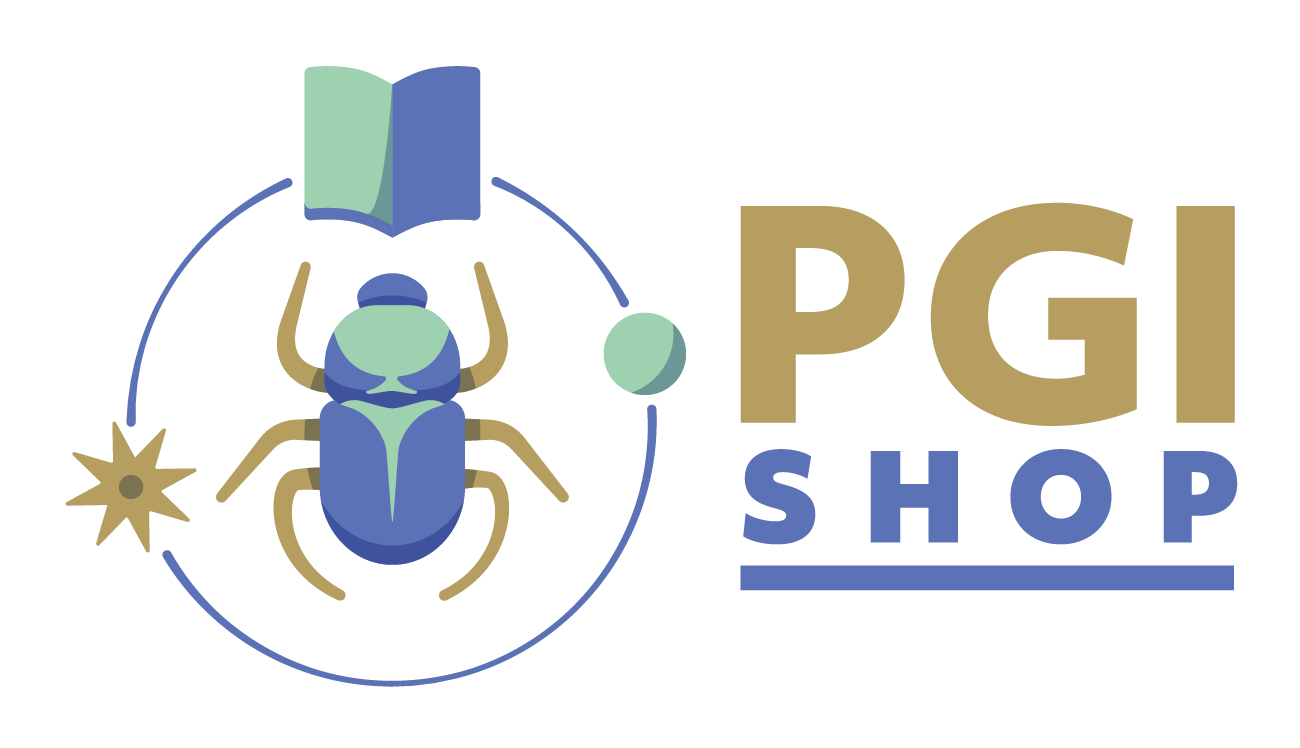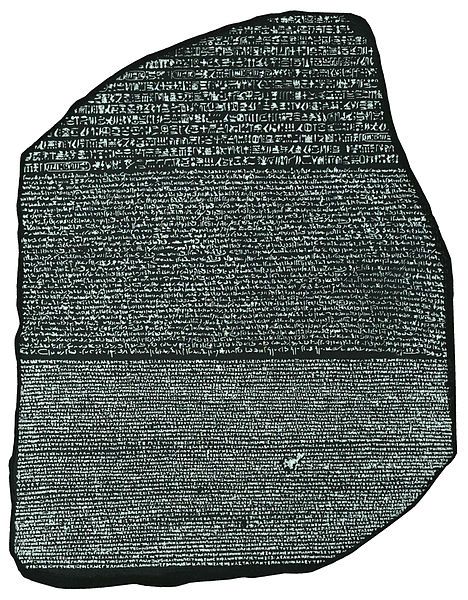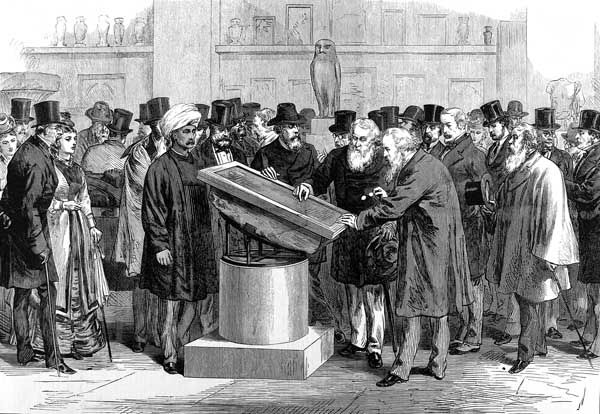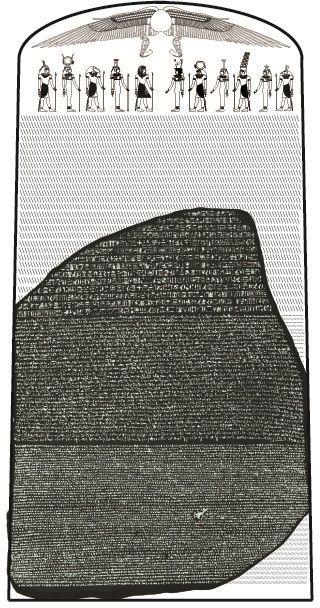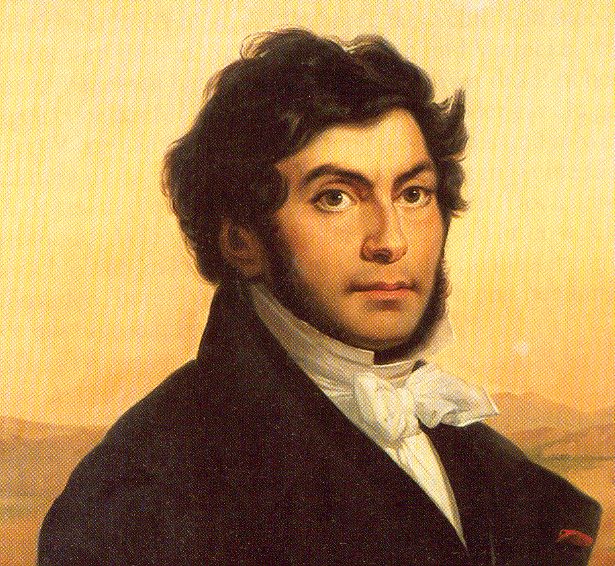Stone of Rosette
The Rosetta Stone at your fingertips!
Until 170 years ago, the "sacred signs" were considered untranslatable. Then Jean-Francois Champollion solved the riddle of ringed snakes and fixed eyes. The Rosette Stone provided the key to deciphering them.
On it, a royal decree is carved in triplicate: In hieroglyphics and in demotic and Greek script. The famous stone was discovered in 1799 by an officer of the Napoleonic expedition near Rosette. After the army's withdrawal from Egypt, the valuable find fell into the hands of the English and was taken to the British Museum in London.
Mass:
approx. 25 cm x 30 cm x 2 cm, 0.600 kilogram
Product attachments: Text translation in English pdf
The discovery This important stone was found in mid-July 1799 by the French officer Pierre Francois Xavier Bouchard and named after the place where it was found. The circumstances of the find are somewhat dubious, as the stone was probably found more by chance than anything else, during the extraction of building material used to construct a fort.
Nevertheless, the historical value of the Rosette Stone was immediately recognised and made available to the scholars Napoleon had taken with him to Egypt. After the surrender of the French in Alexandria, the stone came to London in 1802 to the British Museum. The stone Even in its incomplete state, the Rosetta Stone has enormous dimensions, 114 cm in height, 72 centimetres in width and about 28 cm in thickness. Its weight is 762 kilograms. A large part of the upper left corner, a narrower section of the upper right edge and the lower right corner are missing.
The descriptions on the Rosetta Stone were written in two languages, Egyptian and Greek, with Egyptian divided into hieroglyphics and demotic. Unfortunately, only the last 14 lines of the hieroglyphic text have survived and these correspond to the last 28 lines of the Greek text. Most of the missing lines in the hieroglyphic section could be recovered from a copy of an ordinance on an obelisk found at Damanhur in 1898. Another version of the Rosetta stone text was found on the walls of the birthplace of Isis on the island of Philae.
What is decisive, however, is the fact that all three texts have the same content. Jean François Champollion played by far the greatest role in deciphering the hieroglyphs. Even before him, various scholars had attempted to decipher the texts and laid the foundations. Abbé Barthélemy, Carsten Niebuhr, Etienne de Quatremére, Silvestre de Sacy and the physicist Thomas Young. Champollion was the first to understand and implement the system of these characters. In 1821, he published the results of his 13 years of work on the Rosette Stone. Using the name cartouche of Ptolemy and the name of the king Cleopatra, he was able to interpret the first characters and thus advance the basis for deciphering the hieroglyphs. Today, about 6000 characters are known.
Jean François Champollion was born on 23 December 1790 in Figeac, the son of a bookseller. At the age of 15, he enrolled as a student at the Academy of Sciences in Grenoble. At the age of 19, he worked there as a history professor. Because he was a convinced Napoleon supporter and also publicly declared this, he was banished from France, as was Bonaparte, and only returned to Paris in 1821. In 1822, Champollion finally achieved a breakthrough in the decipherment of hieroglyphics and completed it in the following years.
A two-year study trip to Egypt confirmed the research he had conducted up to that point. In March 1831, he was appointed to the first chair of Egyptology at the Collége de France. Unfortunately, he died only one year later from the consequences of an infectious disease, which he probably contracted in Egypt.
